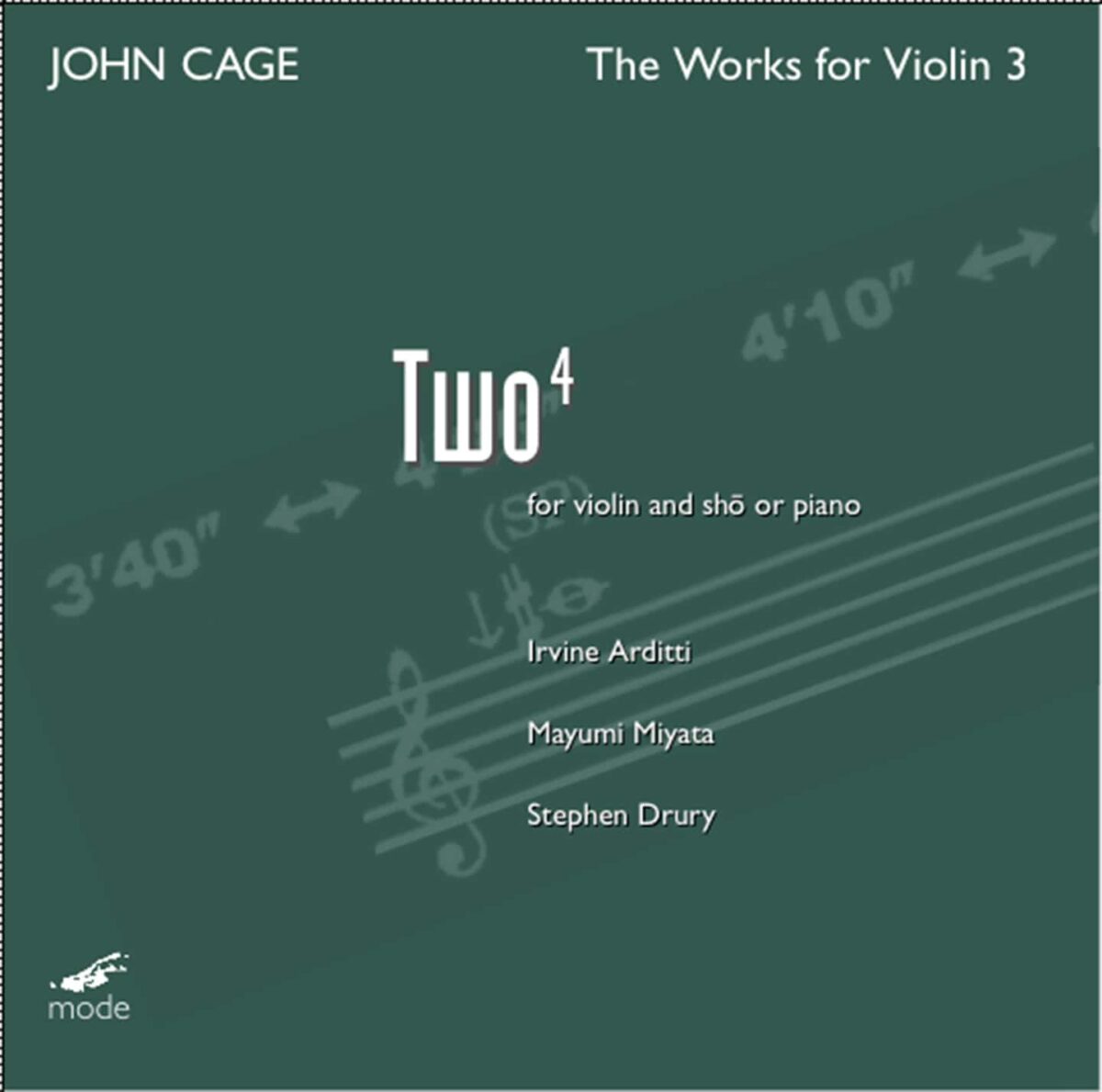
via https://moderecords.com/catalog/088cage/
Number Pieces
https://en.wikipedia.org/wiki/Number_Pieces
The term Number Pieces refers to a body of late compositions (40, or 41 if Seventeen was actually composed) by John Cage. Each piece is named after the number of performers involved: for instance, Seven is a piece for seven performers, One9 (read "One Nine") is the ninth work for one performer, and 1O1 is a piece for an orchestra of 101 musicians. The vast majority of these works were composed using Cage's time bracket technique: the score consists of short fragments (frequently just one note, with or without dynamics) and indications, in minutes and seconds, during which the fragment can start and by what time it should end. Time brackets can be fixed (e.g. from 1.15 to 2.00) or flexible (e.g. from anywhere between 1.15 and 1.45, and to anywhere between 2.00 and 2.30).
Number Pieces とは、ジョン・ケージが晩年に作曲した作品群(40曲、 Seventeen が実際に作曲されたとすれば41曲)のことである。それぞれの作品には、7人の演奏者のための Seven 、1人の演奏者のための One9 、101人のオーケストラのための 1O1 など、演奏者の数に応じた名前がつけられている。これらの作品の大部分は、ケージのタイムブラケット技法を用いて作曲されています。スコアは、短い断片(多くの場合、1音だけで、ダイナミクスの有無は問わない)と、その断片が何時から何時までに始まるかを分と秒で示したもので構成されています。時間の括りは、固定的なもの(例:1時15分から2時まで)と柔軟なもの(例:1時15分から1時45分の間、2時から2時30分の間)があります。
All of the Number Pieces were composed during the last six years of Cage's life, 1987–1992. Most are for traditional instruments, with six exceptions that range from works for rainsticks, the Japanese aerophone shō and conch shells to an electronically amplified version of 4′33″.
Number Pieces はすべて、ケージの人生の最後の6年間、1987年から1992年にかけて作曲されました。ほとんどの作品は伝統的な楽器のためのものであるが、6つの例外があり、雨乞いのための作品、日本の吹奏楽器である笙や法螺貝のための作品、電子的に増幅された "4′33″のバージョンなどがある。
two
https://en.wikipedia.org/wiki/Number_Pieces#Two
| Title | Instrumentation | Date of composition | Dedicatee(s) | Details |
|---|---|---|---|---|
| Two | flute and piano | December 1987 | Roberto Fabbriciani and Carlo Neri | This was the first Number Piece. Both parts contain 9 flexible time brackets and one fixed. Originally devised for flute and vibraphone,[2] the flute part has only three different pitches and is quiet throughout, dynamics ranging from mp to pp. The piano part is notated on two staves, with the content of one played in any relation to that of the other. Each piano time bracket consists of 7 to 10 sounds. |
| Two2 | 2 pianos | Summer 1989 | For "Double Edge": Edmund Niemann and Nurit Tilles | This piece does not use time brackets. The score consists of 36 lines of music, 5 bars each. There are 31 sound events per each line, divided 5, 7, 5; 7, 7 as in Renga poetry. The pianists play one bar at a time in different tempi, both have to finish playing the bar at hand before moving to the next one. |
| Two3 | shō and five conch shells | July 1991 | --- | The shō part is the solo shō Number Piece, One9. There are 10 movements in this work, amounting to 121 minutes total duration. The conch shell parts contain only fixed time brackets. Within each time bracket there are two numbers: the first refers to the conch, the second, in superscript, refers to the intended number of bubbles to be produced (the shells are filled with water and "played" by carefully tipping them until a bubble forms inside, producing a sound). Any three movements of this piece may be performed with 108. |
| Two4 | violin and piano or shō | July 1991 | Commissioned by the McKim Fund of the Library of Congress | Only flexible time brackets are used. The violin part is microtonal and consists for the most part of long sounds. It is divided into three movements. The piano/shō part contains mostly short sounds and is in four movements. |
| Two5 | tenor trombone and piano | October 1991 | Hildegard Kleeb and Roland Dahinden | The trombone part is microtonal. Both parts include silences (up to 5 minutes). |
| Two6 | violin and piano | April 1992 | Ami Flammer and Martine Joste | The time brackets of Two6 are empty and the performers have to fill them themselves. The pianist's material consists of parts of Extended Lullaby (chance-determined variations of Erik Satie's Vexations) and sequences of ascending pitches. The violinist chooses between silence, microtonal passages, or dyads from chance-determined pitches. |
spotify
digging
bandcamp 音楽が買える。凄い
— twwp™ (@taizooo) 2021年3月22日
#yetanotherbachstudy pic.twitter.com/Rx923HStd9
— twwp™ (@taizooo) 2021年3月23日
— twwp™ (@taizooo) 2021年3月23日
two4 #yetanotherbachstudy https://t.co/wtAsn3VfSM
— twwp™ (@taizooo) 2021年3月24日
two6 #yetanotherbachstudy pic.twitter.com/RVbYyo2UZY
— twwp™ (@taizooo) 2021年3月24日
two2 #yetanotherbachstudy pic.twitter.com/wVbVHUJ16E
— twwp™ (@taizooo) 2021年3月24日
two6 #yetanotherbachstudy pic.twitter.com/p9kOeBPjcx
— twwp™ (@taizooo) 2021年3月24日
two #yetanotherbachstudy pic.twitter.com/lhajbCGsoN
— twwp™ (@taizooo) 2021年3月24日
two5 #yetanotherbachstudy pic.twitter.com/64J2dtpASN
— twwp™ (@taizooo) 2021年3月24日